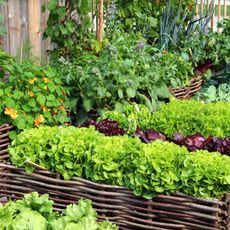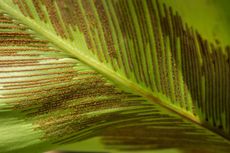Bird's Nest Fern Care - How To Grow Bird's Nest Fern


When most people think of ferns, they think of feathery, airy fronds, but not all ferns actually look like this. The bird's nest fern is an example of a fern that defies our preconceived ideas of what a fern should look like. Even better is the fact that a bird's nest fern plant makes an excellent low light houseplant.
About the Bird's Nest Fern Plant
The bird's nest fern plant gets its name from the fact that the center of the plant resembles a bird's nest. It is also occasionally called a crow's nest fern. Bird's nest ferns (Asplenium nidus) are identified by their flat, wavy or crinkly fronds. Their appearance can bring to mind a seaweed plant growing on dry land.
Bird's nest fern is an epiphytic fern, which means in the wild it typically grows on other things, like tree trunks or buildings. When you buy it as a houseplant, it will be planted in a container, but it can be affixed to planks and hung on a wall much like staghorn ferns.
How to Grow Bird's Nest Fern
Bird's nest ferns grow best in medium to low indirect light. These ferns are often grown for their crinkly leaves and the light they receive will affect how crinkled the leaves are.
A bird's nest fern that receives more light, for example, will have more crinkled leaves, while one that receives less light will have flatter leaves. Keep in mind that too much light or direct light will cause the fronds on bird's nest fern to yellow and die.
Care for a Bird's Nest Fern
In addition to light, another important aspect of bird's nest fern care is its watering. Under ideal circumstances, all ferns would like to have consistently moist, but not wet, soil.
However, part of the reason that bird's nest fern makes an ideal houseplant is that it will tolerate soil that dries out from time to time. Furthermore, this plant does not require the same level of humidity that many other kinds of ferns need, making the care for a bird's nest fern far more forgiving to the occasionally forgetful houseplant owner than other ferns.
Gardening tips, videos, info and more delivered right to your inbox!
Sign up for the Gardening Know How newsletter today and receive a free download of our most popular eBook "How to Grow Delicious Tomatoes."
Fertilizer should only be given to the plant two to three times a year. Even then, the fertilizer should only be applied at half strength and should only be given during the spring and summer months. Too much fertilizer will cause deformed leaves with brown or yellow spots or edges.
Now that you know more about how to grow bird's nest fern and how easy these plants are to grow, try giving them a place in your home. They make a wonderful and green addition to the less brightly lit rooms.

Heather Rhoades founded Gardening Know How in 2007. She holds degrees from Cleveland State University and Northern Kentucky University. She is an avid gardener with a passion for community, and is a recipient of the Master Gardeners of Ohio Lifetime Achievement Award.
-
 "My Worst Mistake" – Gardeners Share 10 Hard-Learned Lessons
"My Worst Mistake" – Gardeners Share 10 Hard-Learned LessonsGardeners never stop learning, and sometimes our mistakes are the best teachers. But why not save time and heartache by learning from other gardeners' failures?
By Melanie Griffiths
-
 Crops for Urban Growing: 8 Edible Plants For Urban Gardens
Crops for Urban Growing: 8 Edible Plants For Urban GardensUrban edible gardening lets your yard do double duty of beauty and practicality. Have fun combining edible plants with ornamentals.
By Teo Spengler
